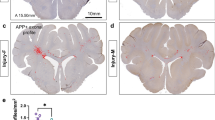Abstract
The weight-drop impact is widely used in making animal model of spinal cord injury (SCI). But there has not yet been an appropriate unit for the quantification of the impact. In this study, we compared the degrees of the spinal cord injury caused by weight-drop impact with the same momentum but different combinations of drop weight and drop height, in order to test whether “momentum” is capable of being the unit for the quantification of weight-drop impact. Thirty adult rats were randomly allocated to three groups and were injured with 5 g–10 cm (group A), 10 g–2.5 cm (group B) and 15 g–1.11 cm (group C) impacts with the same momentum to the spinal cord, respectively. Open-field locomotor function was evaluated using the Basso–Beattie–Bresnahan (BBB) locomotor rating scale. The percentage of spared tissue area (STA) at the epicenter, and 500, 1000 and 1500 μm from the epicenter was calculated using serial sections stained by hematoxylin and eosin. As a result, the behavioral recovery (BBB scores) and the STA percentage were similar in group B and group C. However, the BBB score in group A was significantly lower than that in groups B and C at the same time point post injury. The STA percentage was significantly less and the lesion/cavity length was significantly greater in group A than in groups B and C. These suggested that the 5 g–10 cm weight-drop impact, compared with the other two impacts with different weights and heights, caused a greater damage of the spinal cord when the momentum was the same. So, these impacts with the same momentum but different weights and drop heights cause different degrees of spinal cord injury. Momentum alone is inadequate to be the unit for the qualification of weight-drop impact and to be used to predict the extent of injury.





Similar content being viewed by others
References
Dunham KA, Floyd CL (2011) Contusion models of spinal cord injury in rats. Animal models of movement disorders. Springer, Berlin, pp 345–362
Scheff SW, Rabchevsky AG, Fugaccia I et al (2003) Experimental modeling of spinal cord injury: characterization of a force-defined injury device. J Neurotrauma 20:179–193
Young W (2009) Mascis spinal cord contusion model. Animal models of acute neurological injuries. Springer, Berlin, pp 411–421
Dohrmann G, Panjabi MM (1976) “Standardized” spinal cord trauma: biomechanical parameters and lesion volume. Surg Neurol 6:263–267
Panjabi MM, Wrathall JR (1988) Biomechanical analysis of experimental spinal cord injury and functional loss. Spine 13:1365–1370
Panjabi MM (1987) Experimental spinal cord trauma a biomechanical viewpoint. Spinal Cord 25:217–220
Kearney PA, Ridella SA, Viano DC et al (1988) Interaction of contact velocity and cord compression in determining the severity of spinal cord injury. J Neurotrauma 5:187–208
Tian W, Han XG, Liu YJ et al (2013) Intrathecal epigallocatechin gallate treatment improves functional recovery after spinal cord injury by upregulating the expression of BDNF and GDNF. Neurochem Res 38:772–779
Çevik Ö, Erşahin M, Şener TE et al (2013) Beneficial effects of quercetin on rat urinary bladder after spinal cord injury. J Surg Res 183:695–703
Young W (2002) Spinal cord contusion models. Prog Brain Res 137:231–255
Ghasemlou N, Kerr BJ, David S (2005) Tissue displacement and impact force are important contributors to outcome after spinal cord contusion injury. Exp Neurol 196:9–17
Molt JT, Nelson LR, Poulos DA et al (1979) Analysis and measurement of some sources of variability in experimental spinal cord trauma. J Neurosurg 50:784–791
Hua ZX, Li JM, He CT et al (1988) Discussion of the allen technique for the experiment of spinal cord impact. Chin Sci Bull 33:218–223 (in Chinese)
Basso DM, Beattie MS, Bresnahan JC (1996) Graded histological and locomotor outcomes after spinal cord contusion using the NYU weight-drop device versus transection. Exp Neurol 139:244–256
Basso DM, Beattie MS, Bresnahan JC (1995) A sensitive and reliable locomotor rating-scale for open-field testing in rats. J Neurotrauma 12:1–21
Basso DM, Beattie MS, Bresnahan JC et al (1996) Mascis evaluation of open field locomotor scores: effects of experience and teamwork on reliability. J Neurotrauma 13:343–359
Casas CE, Herrera LP, Prusmack C et al (2005) Effects of epidural hypothermic saline infusion on locomotor outcome and tissue preservation after moderate thoracic spinal cord contusion in rats. J Neurosurg Spine 2:308–318
Acknowledgment
This work was supported by the National Natural Science Foundation of China (81271340).
Conflict of interest
The authors declare that they have no conflict of interest.
Author information
Authors and Affiliations
Corresponding author
About this article
Cite this article
Ji, L., Dang, X., Lan, B. et al. Same impact momentum causes different degrees of spinal cord injury. Chin. Sci. Bull. 59, 4298–4303 (2014). https://doi.org/10.1007/s11434-014-0487-z
Received:
Accepted:
Published:
Issue Date:
DOI: https://doi.org/10.1007/s11434-014-0487-z




